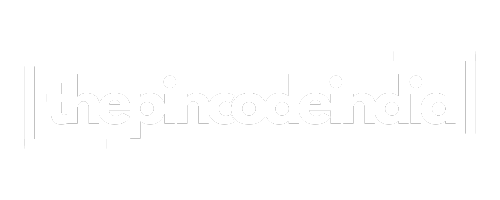When it comes to packaging and label printing, two popular printing methods stand out: flexographic printing (flexo) and rotogravure printing. Both techniques are widely used for printing on various materials like plastic, paper, and foil. However, they are quite different in how they work, the quality they offer, and the type of ink they use—especially rotogravure ink, which plays a big role in the rotogravure process.
In this blog, we’ll explore the main differences between flexo and rotogravure printing, the advantages of each, and how to choose the right one based on your needs. Whether you’re a manufacturer, designer, or business owner looking to print high-quality packaging, this guide is for you.
Understanding the Basics of Flexographic Printing
Flexographic printing, often called flexo, is a modern version of letterpress printing. It uses flexible relief plates made from rubber or photopolymer, which are wrapped around rotating cylinders. These plates are inked and pressed onto the substrate (material to be printed), transferring the image.
Key Features of Flexo Printing:
- Ideal for large-volume packaging jobs
- Can print on various materials: plastic, foil, paper, film, and more
- Uses quick-drying inks such as water-based or UV inks
- Known for faster production speeds
Flexo is popular in the food packaging industry due to its ability to print consistently on flexible materials.
What is Rotogravure Printing and How Does It Work?
Rotogravure printing, also called gravure printing, is a fast printing method used for large jobs. It uses metal cylinders with tiny engraved cells that hold ink. When the cylinder rolls over the material (like plastic or paper), it presses the ink onto it in a clear and detailed way.
This printing method is best known for creating bright colors, sharp images, and smooth color blends, which is why it’s often used for high-quality and premium packaging.
Core Features of Rotogravure:
- Exceptional print quality, especially for images and fine details
- Perfect for long-run printing of the same design
- Uses specialized rotogravure inks that offer excellent adhesion and sharpness
- Suitable for materials like polyester, BOPP, PVC, and foil
Flexo vs Rotogravure: What’s the Main Difference?
The key differences between these two printing methods can be broken down into several important categories:
1. Printing Plates vs Engraved Cylinders
- Flexo: Uses soft, flexible printing plates mounted on cylinders.
- Rotogravure: Uses metal cylinders with engraved designs.
This difference affects both the cost and the quality of printing. Rotogravure offers better detail due to its precision engraving.
2. Ink Type and Performance
- Flexo: Commonly uses water-based or UV-curable inks.
- Rotogravure: Uses solvent-based rotogravure inks, known for deep color penetration and excellent adhesion on films and foils.
Rotogravure ink plays a critical role in achieving the high-definition quality of gravure prints.
3. Print Quality
- Flexo: Good for general packaging needs but may struggle with complex images or fine details.
- Rotogravure: Known for photographic-quality results, especially on flexible packaging.
4. Setup Time and Cost
- Flexo: Faster and more cost-effective to set up for short runs.
- Rotogravure: Higher initial cost due to cylinder engraving, but cheaper per unit for long print runs.
5. Production Speed
Both processes are high-speed, but Flexo generally offers faster turnaround for smaller orders.
When Should You Choose Gravure Printing?
If your packaging requires rich colors, fine details, and consistency over long runs, rotogravure is the way to go. It’s especially popular in industries like:
- Cosmetics
- High-end food packaging
- Pharmaceuticals
- Luxury retail
Its ability to produce vibrant, repeatable results makes it ideal for companies with large-volume printing needs and high visual standards.
The Role of Rotogravure Ink in High-Quality Printing
Rotogravure ink is specially formulated for the gravure printing process. These inks are typically solvent-based, which means they dry quickly and bond strongly to non-porous surfaces like plastic and foil. For more information on high-performance rotogravure ink, click here to explore our full range of products tailored for premium packaging applications.
Benefits of Using Rotogravure Ink:
- Excellent image clarity and color vibrancy
- Quick drying time, enabling faster production speeds
- High adhesion, even on smooth or flexible materials
- Resistance to smudging and fading, essential for durable packaging
For printers in the USA looking to maintain quality and efficiency, choosing the right rotogravure ink is just as important as choosing the printing method itself.
Which Industries Prefer Rotogravure Ink?
Several industries in the USA lean toward rotogravure ink because of its precision and repeatability. These include:
- Food and beverage: Printed pouches, snack wrappers, bottle labels
- Household products: Cleaning supply labels, refill pouches
- Pet food packaging
- Luxury goods: High-end bags, wrapping, gift packaging
In these sectors, rotogravure ink delivers vibrant, consistent, and durable visuals that enhance brand identity.
Why Vanguard Inks and Coatings Matter
When it comes to achieving exceptional results with rotogravure printing, the quality of the ink is just as important as the printing method itself. Vanguard Inks and Coatings is a trusted name in the industry, known for delivering high-performance rotogravure inks that offer excellent color strength, superior adhesion, and fast drying times. Their innovative formulations are designed to meet the demands of today’s high-speed printing presses and non-porous materials like plastic, foil, and film. Whether you’re printing flexible packaging or premium labels, Vanguard’s inks ensure vibrant, durable, and consistent results that elevate your final product’s appearance.
Final Thoughts: Choosing the Right Printing Process for Your Business
Both flexo and rotogravure have their place in modern printing. Your choice depends on factors like budget, run size, print quality requirements, and material type.
- Choose Flexo for fast, flexible, and affordable printing.
- Opt for rotogravure when you need top-tier quality, especially for large-volume packaging with detailed artwork.
If you’re investing in rotogravure printing, don’t underestimate the importance of using high-quality rotogravure ink. It can make a huge difference in how your final product looks and performs.
Ready to Make the Switch to Rotogravure?
Rotogravure printing may be the perfect solution if you’re in the USA and want to elevate your brand with high-quality packaging. Whether you’re producing thousands or millions of units, this method ensures your product looks professional, consistent, and visually appealing.
Need help finding the right rotogravure ink? Feel free to contact a trusted supplier like Vanguard Inks and Coatings who understands the U.S. market and can guide you toward the best solution for your business.
FAQs
1. What is the main difference between flexo and rotogravure printing?
The main difference lies in how they transfer ink to the material. Flexo printing uses flexible rubber or photopolymer plates, while rotogravure printing uses engraved metal cylinders. This makes rotogravure better for fine details and high-quality images.
2. Which printing method is more cost-effective for short runs?
Flexo printing is generally more affordable for short print runs because it has lower setup costs and quicker preparation times compared to rotogravure.
3. Why is rotogravure printing better for high-end packaging?
Rotogravure offers superior image quality, rich colors, and fine detail reproduction, making it ideal for luxury packaging, cosmetics, and food products where visual appeal matters.
4. What type of ink is used in rotogravure printing?
Rotogravure ink is usually solvent-based, designed to dry quickly, and adhere well to smooth or flexible materials like plastic, foil, and BOPP films.
5. Can both flexo and rotogravure print on plastic and foil?
Yes, both methods can print on plastic, foil, and other flexible materials. However, rotogravure tends to produce better quality results on these surfaces due to its precise ink transfer.
6. Is rotogravure printing faster than flexo?
Both methods offer high-speed printing, but flexo might be faster for small to medium jobs due to quicker setup. Rotogravure, however, is ideal for long runs with consistent high quality.
7. Which industries prefer rotogravure printing?
Industries like cosmetics, pharmaceuticals, luxury retail, food & beverage, and pet food often prefer roto printing for its vibrant and reliable print quality.
8. What are the benefits of using rotogravure ink?
Rotogravure ink provides:
- Bright and sharp images
- Fast drying time
- Strong adhesion to films and foils
- Smudge resistance and durability
9. Is it worth investing in rotogravure printing for my business?
If your business needs high-volume printing with premium quality, rotogravure is a smart investment. It ensures professional, consistent, and visually appealing packaging that enhances your brand.
Read more: What Are Pigment Dispersions? Full Guide for Beginners


